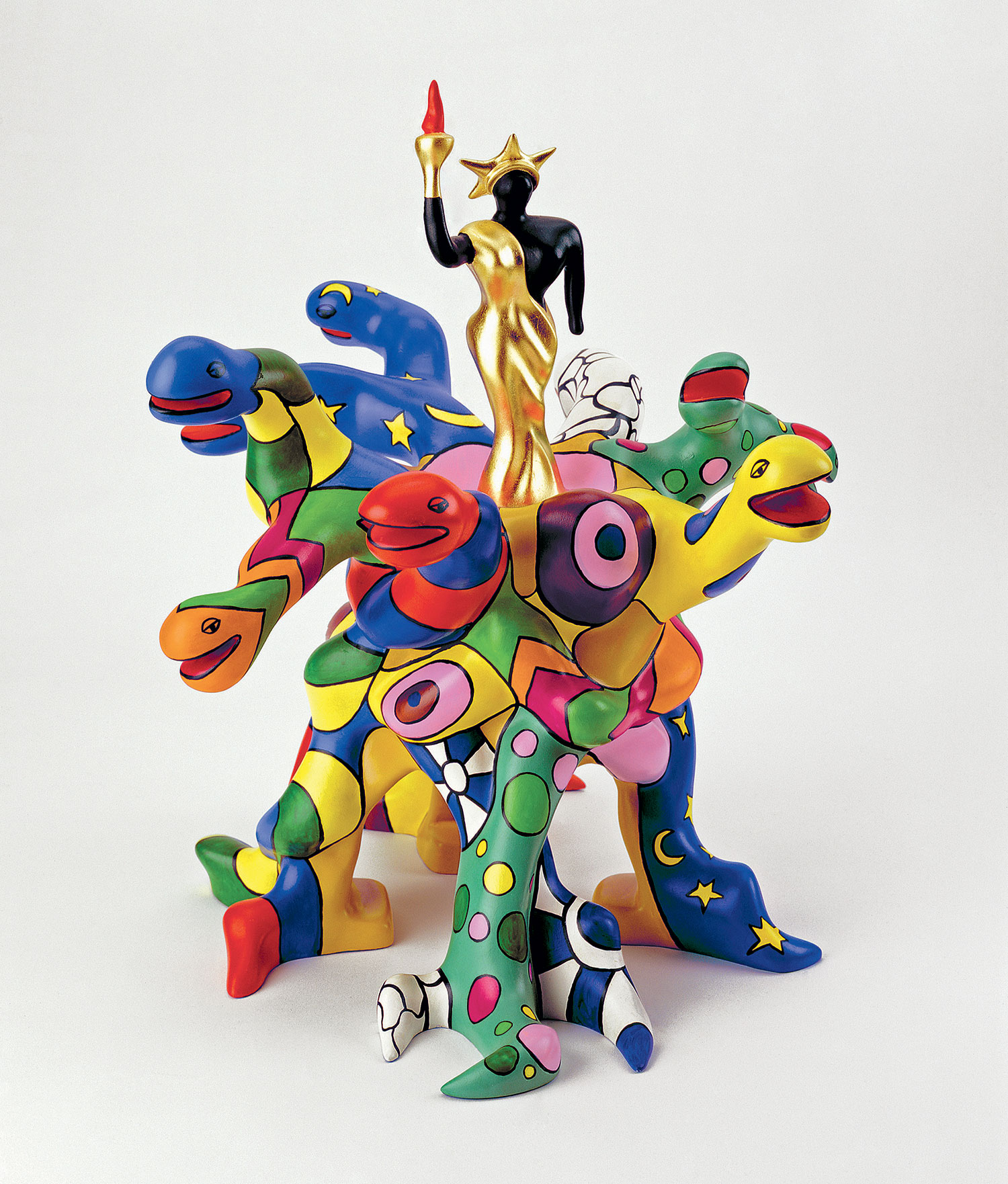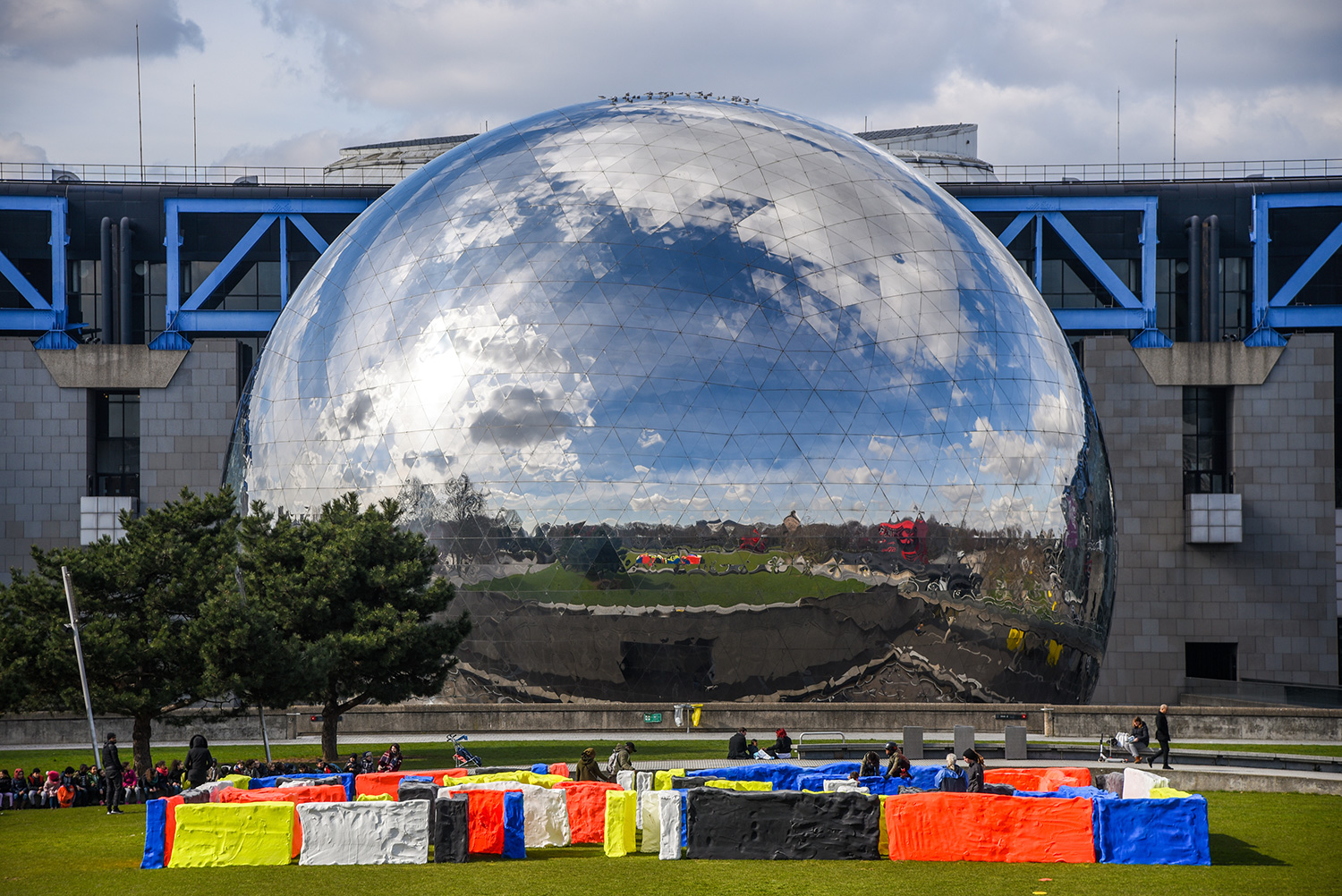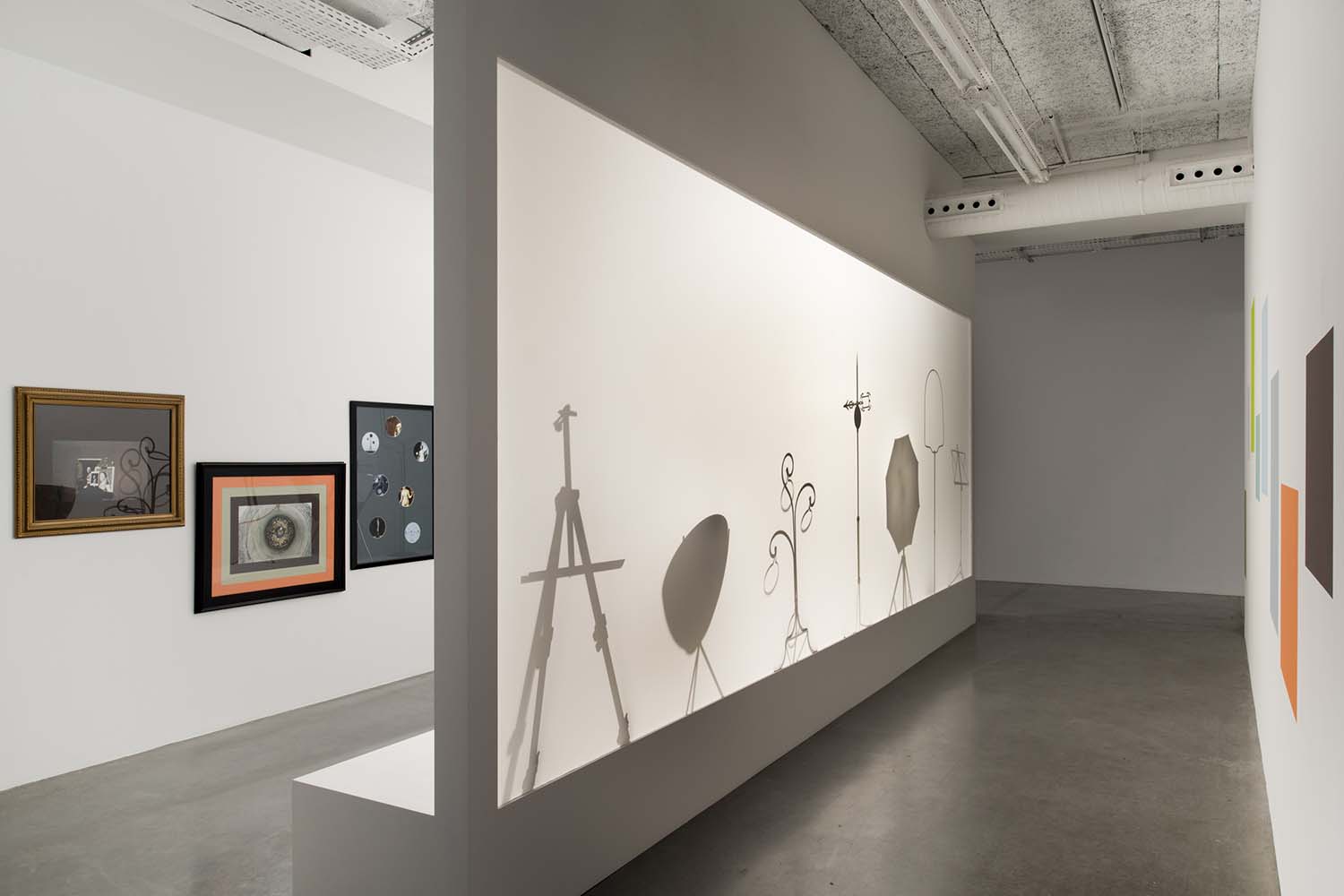Highjacking the name of the iconic French poet, the Arthur Rainbow group show at Air de Paris is a display of works whose common feature is the liberating, transformative and ecstatic power of color. The playfulness and the cheerful colors of the works exhibited recall as much embellishment as a less edifying reality (the impossibility of eternal youth, the fight for human liberty and pleasure, the unbearable lightness of being, etc.).
Sister Corita Kent’s posters are not only militant and religious but also dazzling and pop conveying the message of universal love. Lily van der Stokker’s drawings are a “combination of psychedelic, New Age and girlie stuff”, and as John Waters said Lily’s “colors are so bright and sweet – cotton candy colors – that it’s like feeling nauseous after going on an amusement park ride”. Stéphane Dafflon shows an elegant minimal wallpainting. Dorothy Iannone exhibits collages from the 60’s and small sculptures that she describes as « a long of ecstatic unity, a journey towards unconditional love or a celebration and a stubborn insistence on the goodness of Eros. ». Pierre Joseph’s piece is a tridimensional stereoscopic reproduction of Rimbaud’s poem Les Voyelles. Rob Pruitt’s schematized and gaudy portraits are colorfield paintings with clumsily done eyes and mouths as awkward and jarring Smileys verging on the sickly: “something that makes you feel slightly uncomfortable.”
Colorful motifs and patterns have transformative virtues and represent the processes of modification of perceptions and altered states. Since we all hallucinate our desired objects, the hallucination represents a desire that has become an image. Art can be the product of imaginative hallucinations deriving from altered psycho-perceptive conditions and mind-modifying processes which the artist and the audience experienced. Art can be considered as an attempt to modify the consciousness of the viewer, to change the frames or parameters through which we understand reality.
This exhibition is finally an enjoyable mix between the “dignity of the decorative” (Matisse), the Camp (Sontag) and its hallucinogenic dimension.



